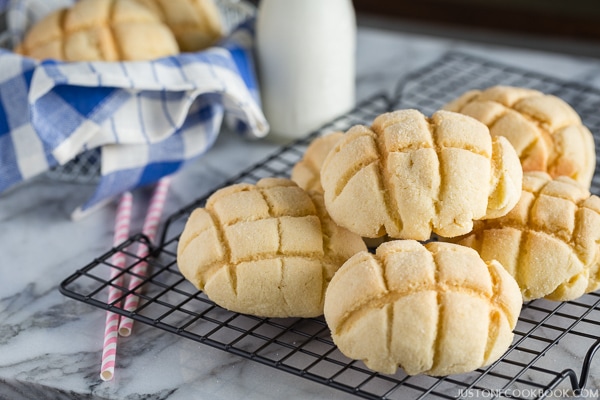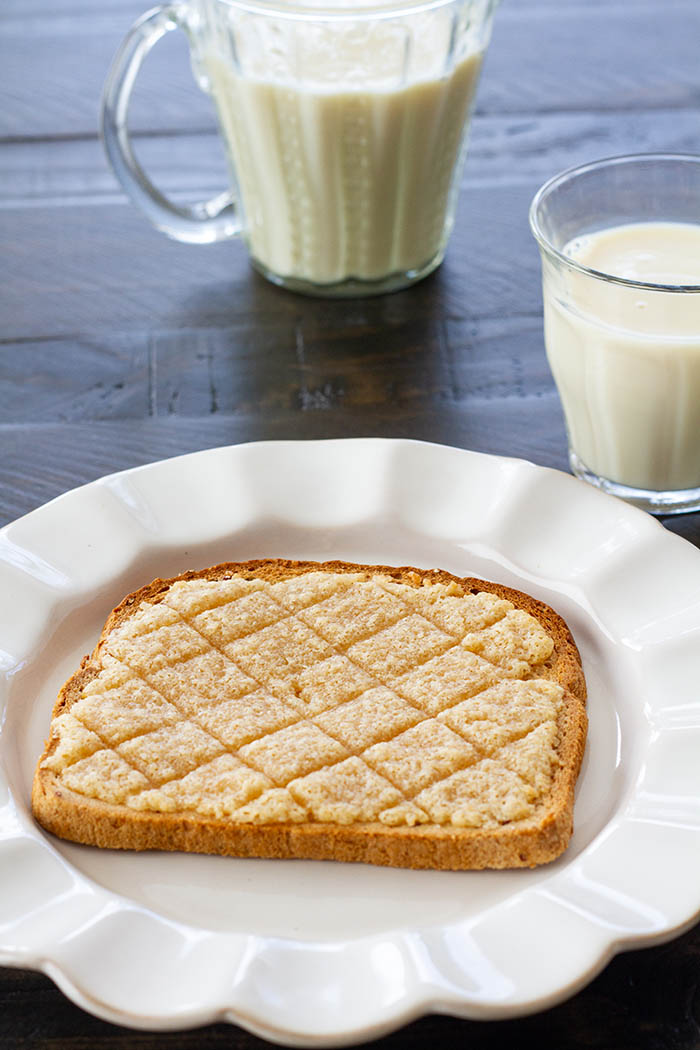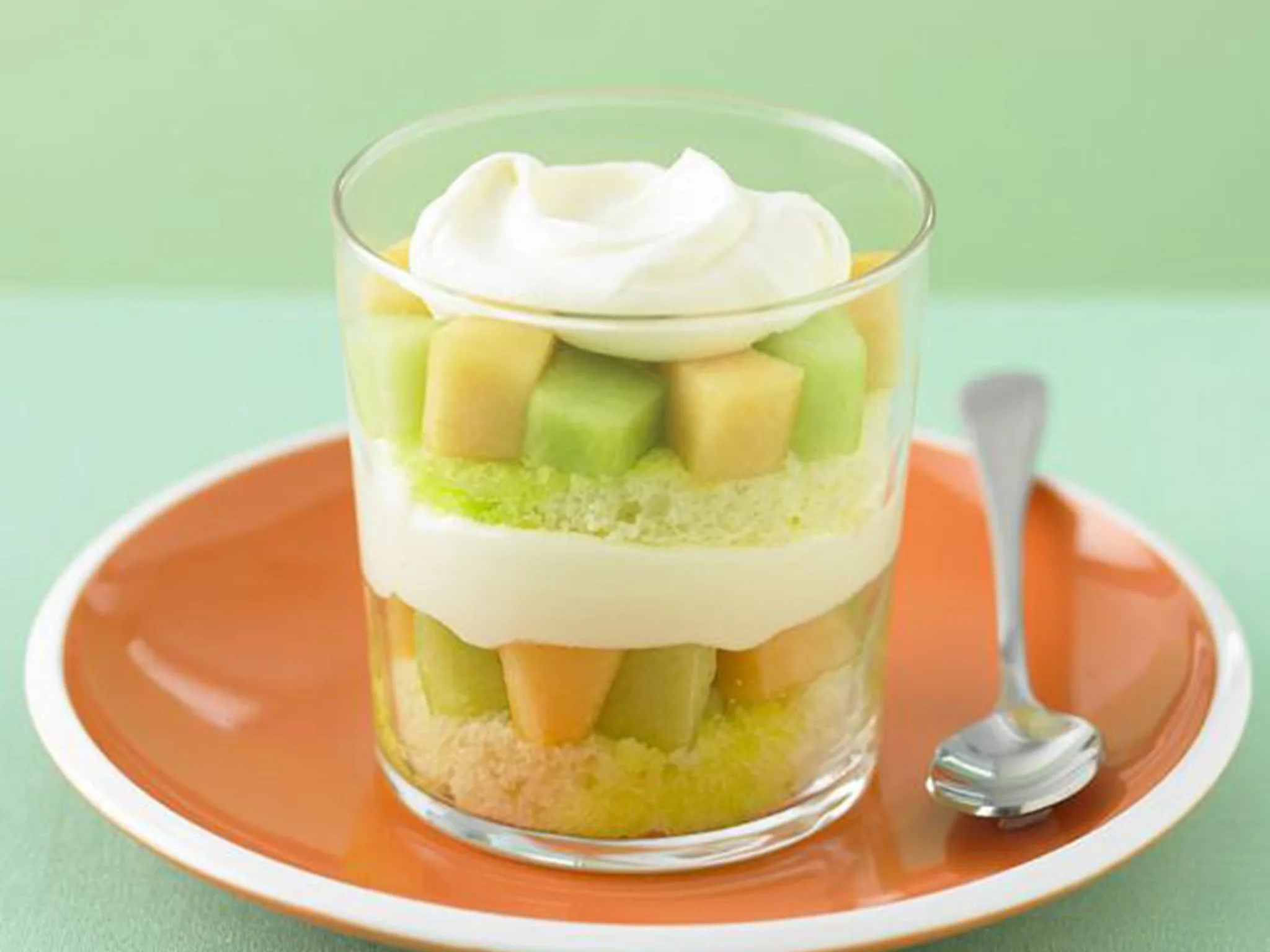Melon Pan
4.7
(165)
Your folders
Your folders
Prep Time: 180 minutes
Cook Time: 15 minutes
Total: 195 minutes
Servings: 10
Cost: $2.84 /serving
Author : Namiko Chen

Ingredients
Export 7 ingredients for grocery delivery
Instructions
Step 1
Gather all the ingredients. I have 2 videos for this recipe: the hand-kneading method and the stand mixer method.
Step 2
In a large bowl, combine 225 g (1 ¾ cup + 2 Tbsp) bread flour, 25 g (3 ½ Tbsp) cake flour, 40 g (3 Tbsp) granulated sugar, and 3 g (1 tsp) kosher salt.
Step 3
Add 4 g (1 tsp) instant dry yeast and 1 large beaten egg to the bowl with dry ingredients.
Step 4
Add 50 ml (3 ½ Tbsp) milk and 50 ml (3 ½ Tbsp) water, both at 86ºF (30ºC). Using a silicone spatula or your fingertips, gently mix the ingredients together until they are combined.
Step 5
In the beginning, the dough is very sticky and wet, but keep mixing until it forms a loose, sticky ball. Also, use the dough to pick up the flour on the sides of the mixing bowl. This step should take about 2 minutes. Transfer the dough from the bowl to a lightly floured work surface.
Step 6
Press the heels of your hands into the dough, pushing forward slightly. Fold the top half of the dough in half back toward you. Then rock forward on the lower part of your palm to press it flat.
Step 7
Turn the dough slightly (to clockwise), fold it in half, and rock into it again with the lower part of your palm. Knead the dough to lengthen and stretch the gluten strands in the dough. Repeat for 5 minutes or so. Tip: If the dough doesn't seem to be losing its stickiness, sprinkle more flour over the top and work it into the dough. You can lightly dust your hands with flour to keep the dough from sticking too much.
Step 8
After kneading for 5 minutes and the dough gets more elastic, press and stretch the dough, about 10 inches (25 cm). Then put small cubes of 35 g (2 ½ Tbsp) unsalted butter on top of the dough. Roll up the dough tucking the butter in, and then continue the kneading process.
Step 9
Your hands, dough, and the work surface will get oily and messy in the beginning. Don't’ be panic. I recommend using a metal/silicone dough scraper to collect the dough stuck on the work surface once in a while and keep kneading.
Step 10
As you knead, the dough will absorb the butter and it will eventually become very smooth and easier to work with. Finally, start banging the dough onto the work surface and fold it over away from you. This helps develop the gluten (elasticity). Bang the dough, turn it 90 degrees, and knead it, using the lower part of your palm. Continue this process for 10 minutes or until the dough is smooth, supple, and silky. Tip: Don’t let go of the dough when you are banging onto the work surface and don’t let it rest for too long between turns.
Step 11
When the dough gets silky and smooth, pull the end of your dough with your thumb and fingers. Keep spreading the dough with your fingers, stretching the dough into thin translucent membrane. This test is called Windowpane Test to see if the dough's gluten has been developed enough. If the dough tears, the gluten isn’t quite ready yet. Knead the dough for another 2 minutes and test again.
Step 12
Shape the dough into a ball by pulling all sides of the ball to the bottom and pinching them together. Place the dough in a bowl (the seam on the bottom).
Step 13
Cover the bowl with a plastic wrap and let the dough rise in a warm place until the dough has doubled in size, about 1-2 hours. I use a Proof setting (100ºF/38ºC) in my oven.
Step 14
In a large bowl, add 60 g (About 4 Tbsp) unsalted butter and mix with the silicone spatula until it becomes smooth.
Step 15
Add 100 g (½ cup) granulated sugar and mix with the silicone spatula until they blend well together.
Step 16
Slowly add a very small amount of 1 large beaten egg (46-50 g/ml) into the bowl and blend well together before you add another small amount of the egg. Continue until all the egg is well blended.
Step 17
Sift 200 g (1 ⅔ cup) cake flour and 2 g (½ tsp) baking powder into the mixture.
Step 18
Using the silicone spatula, mix well until the dough is not floury. Collect the dough and make it into a ball.
Step 19
Measure the weight of the biscuit dough. It should be around 400-410 g. Remember the weight as you’ll need it later (to measure ⅒ of the dough).
Step 20
Roughly cut the dough into 10 pieces.
Step 21
Starting from the big piece, measure the weight again till it weighs ⅒ of the total weight (in my case, 40-41 g). If it’s heavier, pinch off the dough and add the extra dough to a smaller dough, by stuffing the extra into the inside of the smaller dough.
Step 22
Roll the 10 pieces of biscuit dough into 10 balls. Place them on a baking sheet lined with a silicone baking mat or baking sheet. Cover with plastic wrap and rest in the refrigerator for 10 minutes until it hardens a bit.
Step 23
In a stand mixer bowl, combine 225 g (1 ¾ cup + 2 Tbsp) bread flour, 25 g (3 ½ Tbsp) cake flour, 40 g (3 Tbsp) granulated sugar, 3 g (1 tsp) kosher salt, and 4 g (1 tsp) instant dry yeast. Whisk all together.
Step 24
Set your mixer with a dough hook attachment.
Step 25
Add 1 large beaten egg and 50 ml (3 ½ Tbsp) milk and 50 ml (3 ½ Tbsp) water, both of which have been kept at 86ºF (30ºC), to the bowl with dry ingredients.
Step 26
Start kneading on low speed (speed 2). Use a silicone spatula to scrape the sides and bottom of the bowl a couple of times.
Step 27
Continue to knead until it clings to the hook and cleans the sides of the bowl.
Step 28
Once the dough starts to come together, add the butter and continue to mix at low speed until the butter has been incorporated. Then increase speed to medium and knead until the dough is silky, smooth, and elastic.
Step 29
When the dough gets silky and smooth, pull the end of your dough with your thumb and fingers. Keep spreading the dough with your fingers, stretching the dough into a thin translucent membrane. This test is called Windowpane Test to see if the dough's gluten has been developed enough. If the dough tears, the gluten isn’t quite ready yet. Knead the dough for another 2 minutes and test again.
Step 30
Shape the dough into a ball by pulling all sides of the ball to the bottom and pinching them together. Place the dough in a bowl (the seam on the bottom).
Step 31
Cover the bowl with a plastic wrap and let the dough rise in a warm place until the dough has doubled in size, about 1-2 hours. I use a Proof setting (100ºF/38ºC) in my oven.
Step 32
In a clean stand mixer bowl, add 60 g (About 4 Tbsp) unsalted butter and 100 g (½ cup) granulated sugar.
Step 33
Mix until well blended and smooth.
Step 34
Slowly add a very small amount of 1 large beaten egg (46-50 g/ml) into the bowl and blend well together before you add another small amount of the egg. Continue until all the egg is well blended.
Step 35
Sift 200 g (1 ½ cup + 2 Tbsp) cake flour and 2 g (½ tsp) baking powder into the mixture.
Step 36
Mix until it’s incorporated and the dough is not floury. Then take out the dough and form it into a ball.
Step 37
Measure the weight of the biscuit dough. It should be around 400-410 g. Remember the weight as you’ll need it later (to measure ⅒ of the dough).
Step 38
Roughly cut the dough into 10 pieces.
Step 39
Starting from the big piece, measure the weight again till it weighs ⅒ of the total weight (in my case, 40-41 g). If it’s heavier, pinch off the dough and add the extra dough to a smaller dough, by stuffing the extra into the inside of the smaller dough.
Step 40
Roll the 10 pieces of biscuit dough into 10 balls. Place them on a baking sheet lined with silicone baking mat or baking sheet. Cover with plastic wrap and rest in the refrigerator for 10 minutes until it hardens a bit.
Step 41
Once the dough has doubled in size, dust your index finger with flour and put it in the center of the dough. If the hole doesn’t close, then the dough is ready for the next step.
Step 42
Remove the dough with a silicone dough scraper and transfer to a lightly floured work surface. Press the dough with your hands to release gas in the dough and deflate.
Step 43
Fold the dough in thirds and then fold in thirds again. Flip to keep the seam side on the bottom. Shape the dough into a ball. To close the seam line, rotate the dough (clockwise) with both hands while the seam line is touching the work surface.
Step 44
Measure the weight of the main dough. It should be around 460-470 g. Remember the weight as you’ll need it later (to measure ⅒ of the dough).
Step 45
Using a dough scraper, roughly cut the dough into 10 equal pieces. Starting from the big piece, measure the weight again till it weighs ⅒ of the total weight (in my case, 46-47 g).
Step 46
If it’s heavier, pinch off the dough from the center and add the extra dough to a smaller dough, by stuffing the extra into the inside of the smaller dough. Knead to combine well. Shape each dough piece into a nice round ball, pulling from all the sides and tuck into the bottom. Place the dough on your left (right) palm, and rotate it with your right (left) hand, keeping the seam side on the bottom.
Step 47
Put the dough on a baking sheet lined with parchment paper or a silicone baking mat. Cover the dough with plastic wrap (I use a portable cupcake holder lid) to prevent it from drying. Rest the dough for 15 minutes at room temperature.
Step 48
Put the biscuit dough on the lightly floured work surface and flatten the dough with your hand.
Step 49
Using a rolling pin, roll out into 4 inch (10-12 cm) flat rounds. Continue the rest until the main dough is ready.
Step 50
After 15 minutes of resting, flatten the main dough with your hand and fold in thirds.
Step 51
Then fold in thirds one more time and pinch both ends to shape the dough into a ball.
Step 52
Pull the dough from all sides towards the seam on the bottom. Place the dough on your left (right) palm, and rotate it with your right (left) hand a few times, keeping the seam side on the bottom.
Step 53
Place the biscuit dough on your palm and put the main dough in the middle, seam side facing up.
Step 54
Then flip to show the biscuit dough on top. Gently pull all sides of the biscuit dough wrapping around the main dough.
Step 55
Coat the biscuit dough with granulated sugar (2 Tbsp) and remove the excess sugar. Then using a dough scraper or knife, gently score the biscuit dough into a crisscross pattern (I score 3 lines each side).
Step 56
Place the dough on the baking sheet, seam side on the bottom. Cover the dough with plastic wrap to prevent from drying.
Step 57
Let the dough rise in a warm place until the dough rises one and a half (1.5 x) in size, about 50 minutes (I used the Proof setting (100ºF/38ºC) in my oven).
Step 58
When the dough has risen halfway, preheat the oven to 350ºF (180ºC). Note: If you are using the oven for proof, you have to transfer the dough to a warmer place so you can preheat the oven.
Step 59
Bake at for 13-15 minutes. Toward the end of baking if you see the bread is not being browning evenly, rotate the bread once so that the bread gets an even color.
Step 60
Once the bread is baked, transfer to a wire rack. Let it cool for 5 minutes, and enjoy!
Step 61
Once the bread is cooled completely, individually wrap it in plastic to prevent it from drying. Then put it in an airtight container or bag and refrigerate for up to 3 days, or freeze for up to a month. Defrost overnight in the refrigerator or microwave to warm up inside. Then bake it in the oven at 350ºF (180ºC) until crispy on the outside.
Top similar recipes
Curated for youYour folders

 323 views
323 viewsMelon Pan
muchmunchies.com
12 minutes
Your folders

 721 views
721 viewsMelon Pan
chopstickchronicles.com
4.9
(23)
15 minutes
Your folders

 288 views
288 viewsMelon Pan Toast
lafujimama.com
Your folders
 55 views
55 viewsJapanese Melon pan
foodieyuki.com
Your folders

 149 views
149 viewsMelon Pan Toast
okonomikitchen.com
5.0
(14)
5 minutes
Your folders

 235 views
235 viewsTurmeric Matcha Melon Pan – Suncore...
suncorefoods.com
Your folders

 479 views
479 viewsMelon gazpacho
olivemagazine.com
Your folders

 140 views
140 viewsMelon Balls
corianderandlace.com
5.0
(1)
10 minutes
Your folders

 460 views
460 viewsMelon - Smoothie
kochbar.de
5.0
(44)
Your folders

 265 views
265 viewsMelon Sorbet
notoutofthebox.in
5.0
(1)
5 minutes
Your folders

 265 views
265 viewsMelon Smoothie
allrecipes.com
4.5
(28)
Your folders

 112 views
112 viewsMelon tiramisu
womensweeklyfood.com.au
Your folders

 68 views
68 viewsWater melon squash, water melon jui...
cookpad.com
Your folders

 88 views
88 viewsWater melon squash, water melon jui...
cookpad.com
Your folders

 305 views
305 viewsJapanese Vegan Bunny Melon Pan – Su...
zh.suncorefoods.com
Your folders

 211 views
211 viewsJapanese Vegan Bunny Melon Pan – Su...
suncorefoods.com
Your folders

 205 views
205 viewsPurple Sweet Potato Melon Pan – Sun...
suncorefoods.com
Your folders

 204 views
204 viewsEbony Carrot Supercolor Melon Pan –...
suncorefoods.com
Your folders

 1073 views
1073 viewsMelon Caprese Skewers
whatsgabycooking.com
5.0
(1)